Two activities of long-chain acyl-coenzyme A synthetase are involved in lipid trafficking between the endoplasmic reticulum and the plastid in Arabidopsis
- PMID: 25540329
- PMCID: PMC4326746
- DOI: 10.1104/pp.114.250365
Two activities of long-chain acyl-coenzyme A synthetase are involved in lipid trafficking between the endoplasmic reticulum and the plastid in Arabidopsis
Abstract
In plants, fatty acids are synthesized within the plastid and need to be distributed to the different sites of lipid biosynthesis within the cell. Free fatty acids released from the plastid need to be converted to their corresponding coenzyme A thioesters to become metabolically available. This activation is mediated by long-chain acyl-coenzyme A synthetases (LACSs), which are encoded by a family of nine genes in Arabidopsis (Arabidopsis thaliana). So far, it has remained unclear which of the individual LACS activities are involved in making plastid-derived fatty acids available to cytoplasmic glycerolipid biosynthesis. Because of its unique localization at the outer envelope of plastids, LACS9 was regarded as a candidate for linking plastidial fatty export and cytoplasmic use. However, data presented in this study show that LACS9 is involved in fatty acid import into the plastid. The analyses of mutant lines revealed strongly overlapping functions of LACS4 and LACS9 in lipid trafficking from the endoplasmic reticulum to the plastid. In vivo labeling experiments with lacs4 lacs9 double mutants suggest strongly reduced synthesis of endoplasmic reticulum-derived lipid precursors, which are required for the biosynthesis of glycolipids in the plastids. In conjunction with this defect, double-mutant plants accumulate significant amounts of linoleic acid in leaf tissue.
© 2015 American Society of Plant Biologists. All Rights Reserved.
Figures
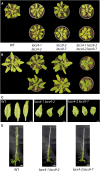
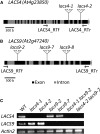
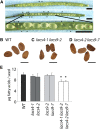
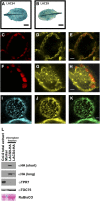
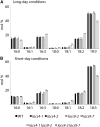
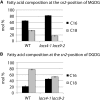
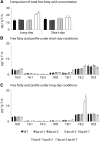
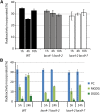


Similar articles
-
Insertional mutant analysis reveals that long-chain acyl-CoA synthetase 1 (LACS1), but not LACS8, functionally overlaps with LACS9 in Arabidopsis seed oil biosynthesis.Plant J. 2010 Dec;64(6):1048-58. doi: 10.1111/j.1365-313X.2010.04396.x. Epub 2010 Nov 15. Plant J. 2010. PMID: 21143684
-
Fatty acid export from the chloroplast. Molecular characterization of a major plastidial acyl-coenzyme A synthetase from Arabidopsis.Plant Physiol. 2002 Aug;129(4):1700-9. doi: 10.1104/pp.003251. Plant Physiol. 2002. PMID: 12177483 Free PMC article.
-
Functional Overlap of Long-Chain Acyl-CoA Synthetases in Arabidopsis.Plant Cell Physiol. 2019 May 1;60(5):1041-1054. doi: 10.1093/pcp/pcz019. Plant Cell Physiol. 2019. PMID: 30715495
-
A role for lipid trafficking in chloroplast biogenesis.Prog Lipid Res. 2008 Sep;47(5):381-9. doi: 10.1016/j.plipres.2008.04.001. Epub 2008 Apr 7. Prog Lipid Res. 2008. PMID: 18440317 Review.
-
Deciphering the roles of acyl-CoA-binding proteins in plant cells.Protoplasma. 2016 Sep;253(5):1177-95. doi: 10.1007/s00709-015-0882-6. Epub 2015 Sep 4. Protoplasma. 2016. PMID: 26340904 Review.
Cited by
-
Functional Role of Long-Chain Acyl-CoA Synthetases in Plant Development and Stress Responses.Front Plant Sci. 2021 Mar 22;12:640996. doi: 10.3389/fpls.2021.640996. eCollection 2021. Front Plant Sci. 2021. PMID: 33828572 Free PMC article. Review.
-
Genome-wide expression analysis of LACS gene family implies GhLACS25 functional responding to salt stress in cotton.BMC Plant Biol. 2024 May 13;24(1):392. doi: 10.1186/s12870-024-05045-0. BMC Plant Biol. 2024. PMID: 38735932 Free PMC article.
-
A Specialized Diacylglycerol Acyltransferase Contributes to the Extreme Medium-Chain Fatty Acid Content of Cuphea Seed Oil.Plant Physiol. 2017 May;174(1):97-109. doi: 10.1104/pp.16.01894. Epub 2017 Mar 21. Plant Physiol. 2017. PMID: 28325847 Free PMC article.
-
Identification and functional analysis of AvLACS genes unveils their role in lipid homeostasis and waterlogging tolerance in kiwifruit (Actinidia valvata Dunn).Front Plant Sci. 2025 Jun 30;16:1580003. doi: 10.3389/fpls.2025.1580003. eCollection 2025. Front Plant Sci. 2025. PMID: 40661760 Free PMC article.
-
Genomic and transcriptomic analyses provide insights into valuable fatty acid biosynthesis and environmental adaptation of yellowhorn.Front Plant Sci. 2022 Sep 6;13:991197. doi: 10.3389/fpls.2022.991197. eCollection 2022. Front Plant Sci. 2022. PMID: 36147226 Free PMC article.
References
-
- Alonso JM, Stepanova AN, Leisse TJ, Kim CJ, Chen H, Shinn P, Stevenson DK, Zimmerman J, Barajas P, Cheuk R, et al. (2003) Genome-wide insertional mutagenesis of Arabidopsis thaliana. Science 301: 653–657 - PubMed
-
- Andersson MX, Goksör M, Sandelius AS (2007) Optical manipulation reveals strong attracting forces at membrane contact sites between endoplasmic reticulum and chloroplasts. J Biol Chem 282: 1170–1174 - PubMed
-
- Aronsson H, Jarvis P (2002) A simple method for isolating import-competent Arabidopsis chloroplasts. FEBS Lett 529: 215–220 - PubMed
Publication types
MeSH terms
Substances
LinkOut - more resources
Full Text Sources
Other Literature Sources
Molecular Biology Databases
Miscellaneous

